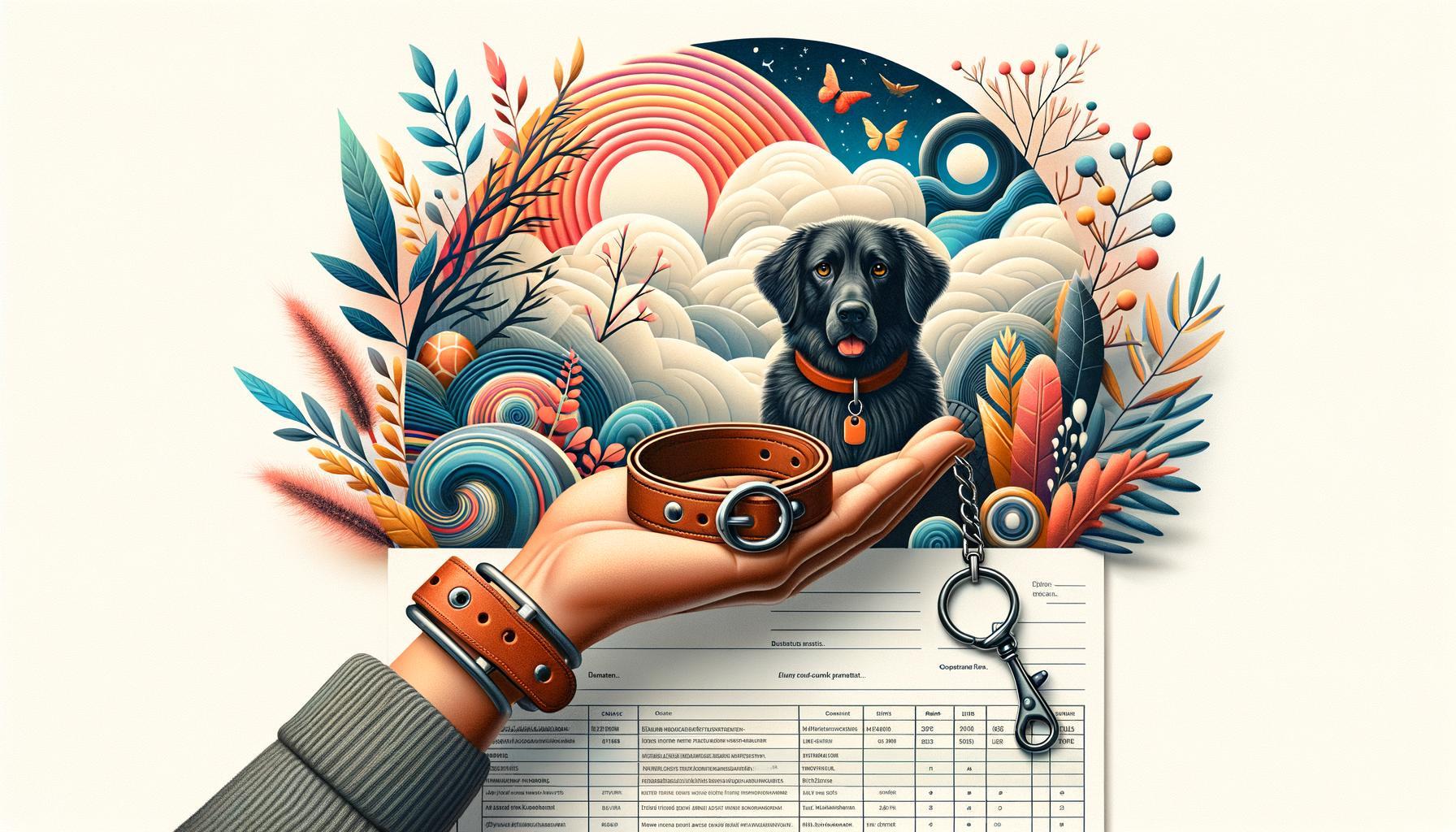In a world resonating with echoes of hustle and heartbreak, finding solace often seems like an impossible quest. Yet, amid the clamor, there stands a beacon of unwavering companionship—dog-breeds-for-emotional-support/” title=”Top Small Dog Breeds for Emotional Support: Finding Your Perfect Companion”>emotional support dogs. These extraordinary canines, with their soulful eyes and boundless empathy, hold the profound ability to bridge the chasms of human desolation. However, the magic of this bond is not innate; it is crafted through meticulous training, dedication, and mutual understanding. “Empowering Bonds: Mastering Emotional Support Dog Training” delves into the intricate tapestry of teaching these empathetic companions, revealing the secrets to fostering not just obedience, but a deep, transformative connection that transcends words, bringing light to even the darkest corners of human experience. Join us as we explore the journey from paw to heart, where patience and love pave the way to empowerment.
Table of Contents
- Building a Strong Foundation: Understanding the Role of Emotional Support Dogs
- Choosing the Right Candidate: Traits and Temperament of an Ideal Emotional Support Dog
- Training Techniques: Practical Methods to Foster Trust and Responsiveness
- Navigating Challenges: Common Obstacles and How to Overcome Them
- Strengthening the Connection: Activities to Enhance Your Bond
- Maintaining Consistency: Long-term Strategies for Continued Success
- Insights and Conclusions
Building a Strong Foundation: Understanding the Role of Emotional Support Dogs
Emotional support dogs play a pivotal role in enhancing mental health by offering companionship and a sense of security. These magnificent creatures are more than just pets; they are lifelines that provide profound emotional stability. **Empathy and intuitive understanding** sit at the core of their ability to sense our emotional states. This is what makes the bond between humans and emotional support dogs so transformative. Their role extends beyond mere presence—they actively intervene during times of emotional distress, providing comfort through physical closeness, affectionate gestures, and unwavering loyalty.
Training an emotional support dog requires a deep understanding of both canine behavior and human psychology. The foundation of this training lies in establishing a relationship based on trust, mutual respect, and consistent communication. Some critical aspects of training include:
- Positive Reinforcement: Using treats, praise, and playtime as rewards to encourage desirable behavior.
- Consistency: Ensuring that training commands and routines are uniform and regular.
- Socialization: Gradually introducing the dog to different environments, people, and other animals to build confidence and adaptability.
| Behavior | Training Tip |
| Responding to Anxiety | Teach the dog to lie beside you and apply gentle pressure. |
| Interrupting Panic Attacks | Train the dog to perform a calming task like licking or nudging. |
| Daily Routine | Establish a routine to create a sense of stability and normalcy. |
Choosing the Right Candidate: Traits and Temperament of an Ideal Emotional Support Dog
Choosing an emotional support dog requires a blend of thoughtful consideration and instinctual wisdom. The ideal canine companion boasts a unique set of traits that make them particularly suited for this demanding role. **Temperament** is key; your potential support dog should exhibit calm and gentle behavior in various situations. While all breeds have their distinct characteristics, certain qualities are invaluable. Look for dogs that are:
- Loyal and attentive
- Intuitive and empathetic
- Non-aggressive and affectionate
- Adaptable to different environments
- Sociable with people and other animals
To assist in making a well-informed choice, consider the following traits and temperament characteristics in potential emotional support dogs:
| Trait | Explanation |
|---|---|
| Calmness | Crucial for providing a stable presence |
| Trainability | Easy to train and responsive to commands |
| Loyalty | Fosters a strong, supportive bond |
| Empathy | Ability to sense and respond to emotions |
| Adaptability | Handles changes in environment or routine well |
Training Techniques: Practical Methods to Foster Trust and Responsiveness
- Positive Reinforcement: This method is pivotal in creating a bond of trust between you and your emotional support dog. The principle is simple—reward desirable behavior. Treats, praise, and petting serve as the perfect motivators. By consistently rewarding positive actions, you create an environment of love and respect, which naturally encourages similar behavior in the future.
- Clicker Training: This technique employs a small device that makes a clicking sound to mark correct behavior. Follow the click with a treat, allowing your dog to connect the action with the reward. Over time, the clicker becomes synonymous with a positive outcome, making it easier for your dog to understand what pleases you.
| Technique | Benefits |
|---|---|
| Trust Building Exercises | Forms a secure bond and reduces anxiety |
| Desensitization Training | Helps in reducing fear responses |
- Trust Building Exercises: Simple daily interactions can foster trust. Eye contact, gentle touches, and sharing calm moments instill a sense of security and dependability. Regular, predictable routines secure your dog’s understanding of their role and your expectations, easing anxiety and improving responsiveness.
- Desensitization Training: Gradual exposure to triggers—such as loud noises or unfamiliar environments—while maintaining a calm demeanor can help reduce your dog’s fear response. Pairing these triggers with positive rewards encourages your emotional support dog to stay composed and trust in your guidance during stressful situations.
Navigating Challenges: Common Obstacles and How to Overcome Them
Training an emotional support dog can be both a rewarding and challenging journey. **One common obstacle** is overcoming the initial **anxiety and stress** associated with new environments. Many dogs, particularly rescues, may exhibit signs of distress such as shaking, whining, or hiding. To alleviate this, consider the following strategies:
- Gradual Exposure: Introduce new locations and situations slowly to help your dog adjust without feeling overwhelmed.
- Positive Reinforcement: Reward your dog with treats and praise whenever they exhibit calm behavior in a new setting.
- Consistent Routine: Maintaining a predictable daily schedule can provide comfort and lower anxiety levels.
Another significant hurdle is developing effective communication between you and your dog. Misunderstandings can lead to frustration for both parties. Establishing a clear and consistent command system can mitigate these issues. Here’s a useful table to help organize commands and cues:
| Command | Cue | Description |
|---|---|---|
| Sit | Raised hand | Dog sits on its haunches |
| Stay | Open palm | Dog stays in place |
| Come | Extended arm | Dog approaches handler |
Strengthening the Connection: Activities to Enhance Your Bond
Deepening the bond with your emotional support dog involves engaging in activities that foster trust, understanding, and companionship. Here are some **fun and effective** activities to get you started:
- Nose Work and Scent Games: Dogs have an incredible sense of smell, and scent games can stimulate their minds while fostering teamwork.
- Interactive Playtime: Games like fetch, tug-of-war, and puzzle toys not only keep your dog physically active but also help in building a stronger bond through shared joy.
- Obedience Training: Spend time practicing commands and tricks; it strengthens mutual respect and improves communication.
Consider incorporating these activities into your routine to further enhance your connection:
| Activity | Benefit |
|---|---|
| Daily Walks | Encourages regular exercise and bonding time |
| Quiet Cuddle Time | Strengthens emotional connection and trust |
| Socialization Outings | Builds confidence and improves social skills |
Maintaining Consistency: Long-term Strategies for Continued Success
To ensure **continuity in training** with your emotional support dog, consistency is key. Establishing a daily routine for training sessions is critical for reinforcing learned behaviors. Dedicate a specific time each day, as consistency in timing helps the dog anticipate training and prepare for it mentally. Including a variety of activities can prevent monotony and keep your dog engaged. Some activities to include are:
- Basic Commands Practice (Sit, Stay, Come)
- Interactive Play Sessions
- Puzzle Toys for Mental Stimulation
- Socialization Walks
Regular feedback and reinforcement, such as verbal praise or treats, can solidify their positive behaviors and make training sessions something both of you look forward to.
Additionally, regular health check-ups and a balanced diet are pivotal parts of maintaining your dog’s physical and emotional well-being, ensuring they’re ready and able to participate in their training. Collaborate with a veterinarian to set up a nutritional plan. Here is a summary of an optimal daily diet:
| Meal Component | Frequency |
|---|---|
| High-Quality Protein | 2 Times Daily |
| Fresh Vegetables | Once Daily |
| Complex Carbohydrates | 2-3 Times Weekly |
Maintain open communication with a professional trainer or behavioral specialist to troubleshoot any challenges and stay on track for long-term success.
Insights and Conclusions
As we draw the curtain on our exploration of “Empowering Bonds: Mastering Emotional Support Dog Training,” it’s apparent that the roots of this journey delve deeper than mere commands and tricks. It’s a dance of empathy, a symphony of mutual trust, and a tale forever etched in the shared cadence of heartbeats between human and canine.
Through gentle guidance and unwavering patience, the bonds we cultivate with our four-legged companions not only bring solace and joy but also highlight the essence of empathetic coexistence. Each woof becomes a whisper of unspoken understanding, and every wag of a tail paints a canvas of unconditional support.
In this intricate ballet of emotions and training techniques, we find that the true mastery lies not just in teaching, but in understanding. Every step taken together is a testament to the profound connection that empowers both dog and handler to flourish.
Thus, as you lace up your training shoes and reach for that leash, remember, it’s not just about perfecting a craft—it’s about nurturing the soul of a friendship that triumphs over life’s ebbs and flows. And with each passing day, may your journey be illuminated by the joy of shared accomplishments and the quiet strength of an unbreakable bond.







Leave a Reply